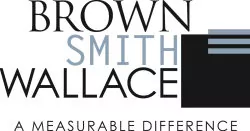On January 5, 2017, the Financial Accounting Standards Board (FASB) published guidance to clear up the existing rules for determining whether the purchase (or sale) of an asset or group of assets qualifies as the purchase (or disposal) of a business. Here's what's changing under the updated guidance and why the changes are needed.
Finding clarity
Critics have long complained that the current definition of a business is overly broad and captures too many day-to-day purchases of assets, requiring businesses to follow the complex rules for business combinations under existing U.S. Generally Accepted Accounting Principles (GAAP).
"Stakeholders expressed concerns that the definition of a business is applied too broadly and that many transactions recorded as business acquisitions are, in fact, more akin to asset acquisitions," FASB Chairman Russell Golden said in a statement. "The new standard addresses this by clarifying the definition of a business while reducing the cost and complexity of analyzing these transactions."
Accounting Standards Update (ASU) No. 2017-01, Business Combinations (Topic 805): Clarifying the Definition of a Business, revises the definition of "business." The change is expected to reduce the number of transactions that qualify as business combinations versus routine deals involving assets.
Laying the groundwork
The new definition lays out new minimum requirements for a set of assets to be considered a business. A set must, at minimum, include an "input" and a substantive process that together significantly contribute to create outputs. Inputs can include people, intellectual property or raw materials. The standard provides guidance to determine whether both an input and a substantive process are present.
The standard also includes two sets of criteria to consider whether a set has outputs. Although outputs aren't required for an asset set to be a business, outputs generally are a key element of a business. Outputs typically are considered goods or services for customers that provide (or have the ability to provide) a return to the business's investors in the form of dividends, lower costs or other economic benefits.
In addition, the update provides a screen, or shortcut, to help accountants make a quick call about when a set of assets isn't a business. The screen requires that, when substantially all the fair value of the gross assets acquired (or disposed of) is concentrated in a single asset or a group of similar identifiable assets, the set isn't a business.
Coming soon
Public companies must follow the new guidance for annual periods beginning after December 15, 2017, including interim periods within those fiscal years. Privately held companies must adhere to the new definition for fiscal years beginning after December 15, 2018, and interim periods within fiscal years that begin after December 15, 2019. Early application is permitted under certain circumstances.
More changes in the works
The FASB considers ASU No. 2017-01 to be the first phase of its broader effort to sharpen the difference between the acquisition (or sale) of a business and the acquisition (or sale) of a group of assets.
In June, the FASB released what it considers phase two: Proposed ASU 2016-250, Other Income — Gains and Losses From the Derecognition of Nonfinancial Assets (Subtopic 610-20): Clarifying the Scope of Asset Derecognition Guidance and Accounting for Partial Sales of Nonfinancial Assets. The update clarifies how to account for sales and disposals of nonfinancial assets, such as real estate.
The planned amendments would typically apply to contracts "in which substantially all of the fair value of the assets promised to a counterparty is concentrated in nonfinancial assets" and subsidiaries "in which substantially all of the fair value of the assets in the subsidiary is concentrated in nonfinancial assets." The FASB expects to publish a final update in the coming months.
If you questions regarding ASU No. 2017-01, please contact Dan Ward, Principal, Audit Services, at 314.983.1237 or dward@bswllc.com.
The content of this article is intended to provide a general guide to the subject matter. Specialist advice should be sought about your specific circumstances.

